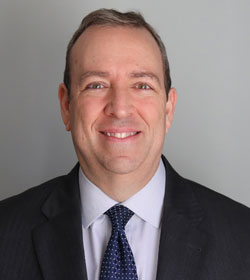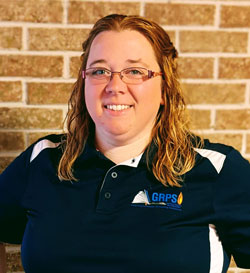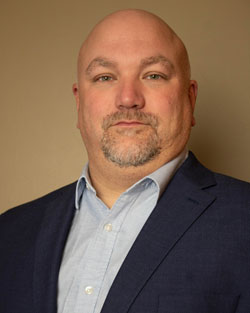Grand Rapids – Craig Ghareeb has been with the Grand Rapids Public Schools since 1984, when he was working part-time for the district already as an Ottawa Hills High School student.
He’s now the district’s coordinator of management information systems, a job he said is always evolving and never boring — although he admitted that in an industry that “doesn’t always turn on a dime,” bringing new technologies to K-12 education can be a slow-go.
There is thus an irony in what COVID-19 has meant for him and his team of IT specialists, who had to suddenly change most of their normal ways of doing things when the state ordered schools closed last spring and sent GRPS into online-only learning that continued into fall 2020.
“We’ve now had to turn on a dime and still do our work well,” he said. “I guess that’s ‘be careful what you wish for.'”
Some of their work has been in helping GRPS students and parents, but the bulk of it has been in assisting district teachers in the sudden transition from face-to-face learning to online instruction.

Former Teacher Trains Others
For Ghareeb, the son of two longtime educators in Wyoming schools, seeing things from a teacher’s perspective comes pretty naturally, and he said he and his team were grateful to be able to assist GRPS teachers.
A 1988 graduate of Ottawa Hills, Ghareeb went on to attend Grand Rapids Junior College and then Grand Valley State University, where he was a computer programming major with a minor in technical theater (more on that later).
In a normal school year, he said, he and his colleagues across Kent County would have their arms around a wide variety of areas, including student devices; classroom technologies such as projectors and interactive whiteboards; phone and communication systems; HVAC and lighting systems; and much more.
But in the wake of COVID, district IT folks have seen their normal cycles of planning time, pilot time, reflection time and implementation time be significantly compressed as initiatives move from planning to implementation in quick order.
“It really does feel like rebuilding the plane while it’s in the air,” he said.

Difficult Not Seeing People Every Day
Instructional technology specialist Erin Gotra chuckled when she heard Ghareeb’s airplane metaphor.
She has been with the district for nine years, including seven years teaching at Stocking Elementary before moving into her current post.
She said COVID has been tough because in the past she loved being able to work within classrooms so that she could interact with the students and build relationships with them and the staff. Now, working from home, she still works directly with teachers but via video calls and messaging.
“It’s been difficult not seeing people in person every day,” she said. “During this pandemic, it can get a little lonely.”
But she agreed that the pandemic also has brought opportunity.
“Staff were forced into viewing and delivering content digitally and couldn’t rely on how they’ve always taught,” she said. “And just like students need differentiated instruction, our staff does too. We have a wide range of knowledge levels among staff when it comes to technology integration in the classroom, and that’s okay. It’s okay to be a learner right now.”
On the student side of things, Gotra said the tricky part from her perspective is that it’s really hard to meet the needs of all students in a face-to-face classroom, let alone in a virtual one.
“We still have a long way to go to learn best practices for teaching and learning in a virtual environment,” she said.

Asking ‘How Can I Do This?’
Gotra’s fellow instructional technology specialist Mike Hastings echoed her comments.
He stepped into his role just last fall after previously serving as a science teacher at Westwood Middle.
Work that was being done in the background before COVID suddenly became front-and-center in March of 2020, he said, with initiatives such as a formal learning management system for the district and 24/7 access to content and materials for students, suddenly became instant priorities.
It was tough, he said, because some staff did not have the preparation and training needed to “swim with tech in the deep end.” But, he added, the positive was 2,000 administrators, teachers and support staff were moved into a new technology reality, and now they are making amazing strides.
“They are modeling the growth mindset for their students,” he said. “They are asking ‘How can I do this?’ and thinking creatively, coming up with new and wonderful ideas and techniques for the distance learning world. They also are doing a majority of the front-line support for students using info and knowledge we share with them.”
And while students are “a generation born into technology,” Hastings said, that doesn’t necessarily mean they are as comfortable with it as one might assume, nor are parents.
“There is a high percentage of parents and students who don’t have a clear understanding of how their phone or device does what it does for them, and very little understanding of the concept of cloud-based data and accounts.”
A Deserved Curtain Call
Ghareeb said that the work of Gotra and Hastings has been impressive.
“We have two rockstar-teachers-turned-instructional-technology-specialists who stepped up,” he said. “They helped develop online course materials and rallied willing-and-able teachers to speed ahead and act as real-time support mechanisms for their peers, who felt like they were in the deep end as we raced to get back to student instruction.”
He is also proud of his entire staff which he said has worked harder than ever and showed how productive it could be working from home. His team includes six network and systems technicians; five end-user system technicians; three Helpdesk technicians; the two instructional technology specialists; one financial system analyst; and one administrative assistant/systems operator.
And he has been impressed by the ways in which GRPS teachers have adopted new technologies and adapted to the instructional challenges they have faced this semester.
“The use of technology tools in instruction is not always easy for all staff,” he said. “Sure, we had been using a lot of technology-based solutions for instruction in classrooms for years, but – like so many districts – we were never in a situation where everything had to be able to be performed remotely. Everything.”
His minor in technical theater was no small thing, said Ghareeb, when it came to dealing with COVID.
“I ran a 1,000-seat community theater for almost 10 years,” he said, “and always told my technicians that if the audience didn’t know we existed, we were doing our job right. Our job at GRPS is not so different.
“Our staff doesn’t mind being ‘backstage’ because that means their systems are running smoothly,” he added. “But this is a moment in time where I’m glad they can take a small curtain call, because they deserve it.”









